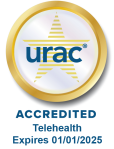In cold weather, frostbite happens fast. Exposure to extreme cold means the risk of frostbite, even after just a few minutes. Do you know the signs of frostbite?

A 32-year-old man’s wife called United Concierge Medicine and was immediately connected to the on-call provider. Her husband, the patient, could be heard moaning in the background. His wife informed our provider that the patient had been outside in sub-zero temperatures (literally -14 degrees) working on his troublesome car’s engine for nearly an hour. He came inside complaining about his fingertips being numb and red and extremely painful.
The UCM emergency medical provider easily guided the patient’s wife in establishing a video call using the UCM Now app, and was able to assess the man’s fingers directly with his wife’s assistance as well as screen the patient for hypothermia. The provider noted that the patient’s fingertips were deeply red, and, as she had the patient’s wife check capillary refill (the time taken for color to return to an external capillary bed after pressure is applied to cause blanching), his fingertip blood flow was delayed at 10 seconds as opposed to the normal 3-5 seconds.
Next, the UCM provider advised the patient’s wife to prepare a large bowl of warm water that would help gently start the rewarming process. The patient placed his hands in the warm water, and began feeling increased pain and tingling in his fingers. He was reassured that these sensations were to be expected, and he was encouraged to continue the soaking. Within minutes, the patient’s fingers were reported as feeling “much better” by the patient — who was understandably relieved!
FOLLOW-UP CALL TO MONITOR CONDITION
The UCM provider set up a follow-up call for later that night in order to re-examine the patient and assess possible advancement of the frostbite, or not. Thankfully, during the follow-up call eight hours later, the UCM provider was able to see that the patient did not advance with his condition and had improved considerably.Being well-versed in cold-weather related medical emergencies, the UCM provider informed the patient to look out for paleness and blistering about the fingertips that could develop over the next 24 hours — an indication of more advanced frostbite.This patient’s diagnosis was a mild case of frostbite called frostnip, a milder version of frostbite, and does not cause permanent damage
SIGNS AND SYMPTOMS OF FROSTBITE
- At first, cold skin and a prickling feeling
- Numbness
- Red, white, bluish-white or grayish-yellow skin
- Hard or waxy-looking skin
- Clumsiness due to joint and muscle stiffness
- Blistering after rewarming, in severe cases
signs and symptoms list from the Mayo Clinic
Learn more about Frostbite from the Mayo Clinic.
WHAT YOU SHOULD KNOW
Exposure to extreme cold means the risk of frostbite, even after just a few minutes. Extreme cold weather is hitting across the United States this winter, and we’re all get used to the term Polar Vortex. Because frostbite can happen so fast, the patient often doesn’t realize it’s happened until it’s too late. As soon as you, or someone else alerts you, think you might be experiencing the signs or symptoms of frostnip or frostbite, contact UCM’s emergency medical providers. We are here to guide you through emergency issues — of all kinds. They treat and triage countless medical cases every day, and are available 24 hours a day to provide immediate emergency care, helping patients get the right kind of care, at the right time, at the right place.






